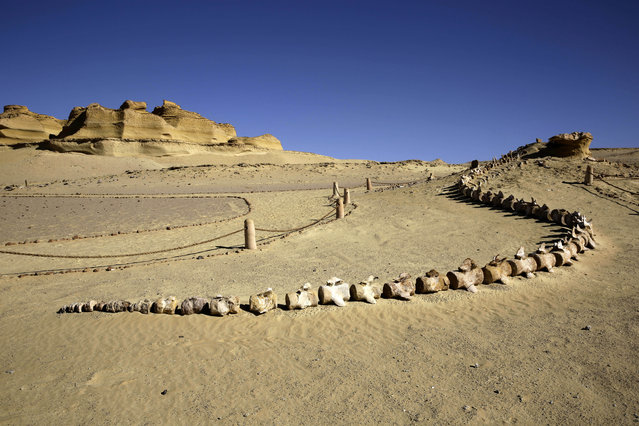
Fossilized whale bones are on display outside the Wati El Hitan Fossils and Climate Change Museum, a UNESCO natural World Heritage site, on the opening day, in the Fayoum oasis, Egypt, Thursday, January 14, 2016. Egypt has cut the ribbon on the Middle East's first fossil museum housing the world's largest intact skeleton of a "walking whale" in an attempt to attract much-needed tourists driven off by recent militant attacks. The construction of the much-hyped Fossils and Climate Change Museum was covered a 2 billion euros (2. 17 billion dollars) grant from Italy, according to Italian Ambassador Maurizio Massari. Its centerpiece is an intact, 37-million-year-old and 20-meter-long skeleton of a legged form of whale that testifies to how modern-day whales evolved from land mammals. The sand-colored, dome-shaped museum is barely discernible in the breathtaking desert landscape that stretches all around. (Photo by Thomas Hartwell/AP Photo)
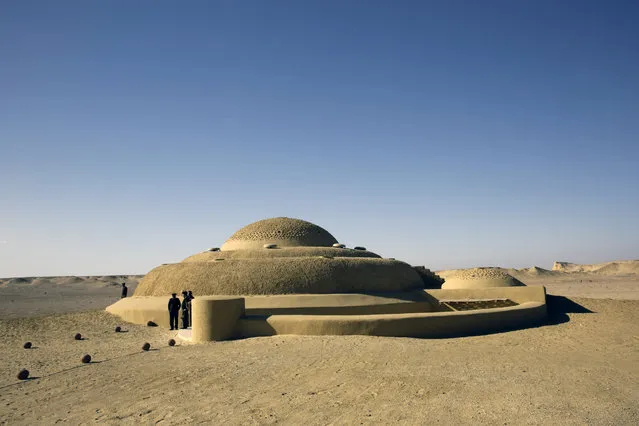
Guards stand outside the Wati El Hitan Fossils and Climate Change Museum, a UNESCO natural World Heritage site, on the opening day, in the oasis of Fayoum, Egypt, Thursday, January 14, 2016. (Photo by Thomas Hartwell/AP Photo)
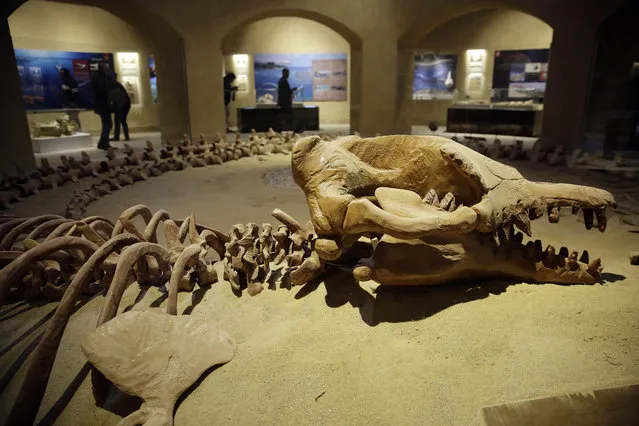
The largest intact Basulosaurus isis whale fossil, which is on display at the Wati El Hitan Fossils and Climate Change Museum, on the opening day, in the Fayoum oasis, Egypt, Thursday, January 14, 2016. (Photo by Thomas Hartwell/AP Photo)
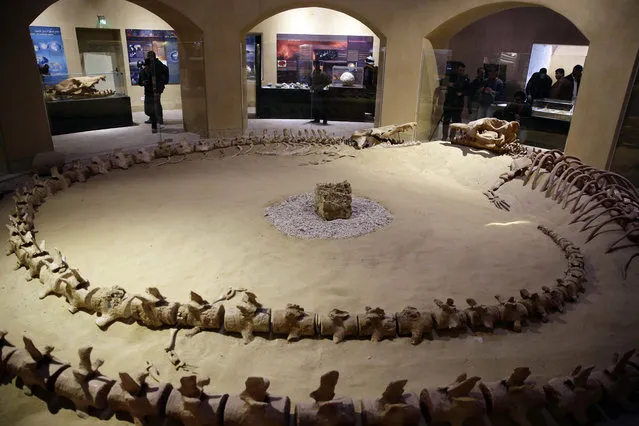
The largest intact Basulosaurus isis whale fossil, which is on display at the Wati El Hitan Fossils and Climate Change Museum, on the opening day, in the Fayoum oasis, Egypt, Thursday, January 14, 2016. (Photo by Thomas Hartwell/AP Photo)
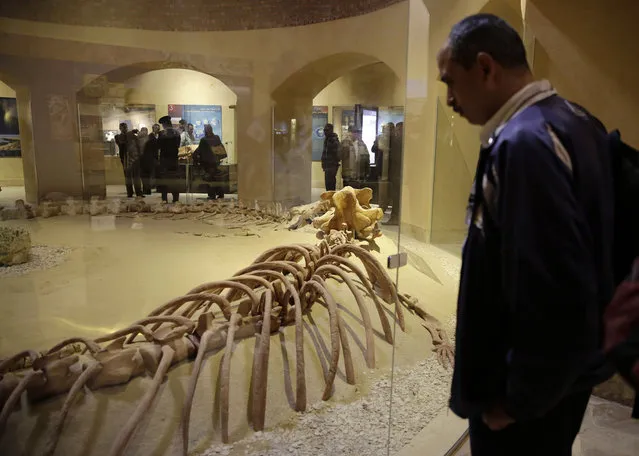
A visitor views the largest intact Basulosaurus isis whale fossil, which is on display at the Wati El Hitan Fossils and Climate Change Museum, on the opening day, in the Fayoum oasis, Egypt, Thursday, January 14, 2016. (Photo by Thomas Hartwell/AP Photo)
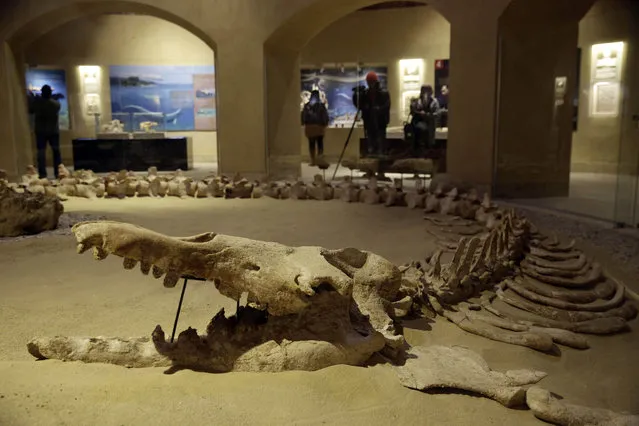
The largest intact Basulosaurus isis whale fossil, which is on display at the Wati El Hitan Fossils and Climate Change Museum, on the opening day, in the Fayoum oasis, Egypt, Thursday, January 14, 2016. (Photo by Thomas Hartwell/AP Photo)
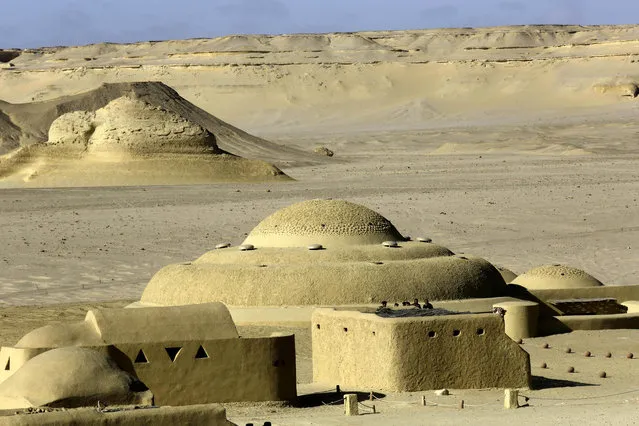
The Wati El Hitan Fossil sand Climate Change Museum, a UNESCO natural World Heritage site, is seen on the opening day, in the Fayoum oasis, Egypt, Thursday, January 14, 2016. (Photo by Thomas Hartwell/AP Photo)

Egyptian Army soldiers stand guard outside the Wati El Hitan Fossils and Climate Change Museum, a UNESCO natural World Heritage site, on the opening day, in the Fayoum oasis, Egypt, Thursday, January 14, 2016. (Photo by Thomas Hartwell/AP Photo)
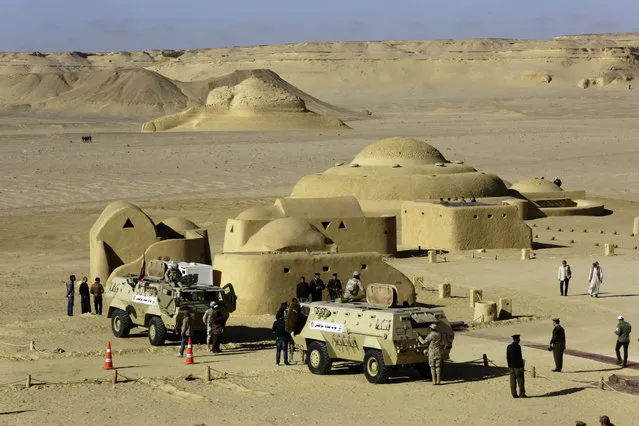
Egyptian Army vehicles stand outside the Wati El Hitan Fossils and Climate Change Museum, a UNESCO natural World Heritage site, on the opening day, in the Fayoum oasis, Egypt, Thursday, January 14, 2016. (Photo by Thomas Hartwell/AP Photo)
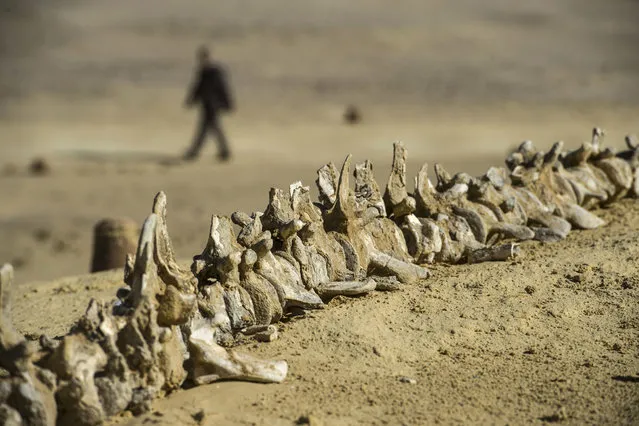
A picture taken on January 14, 2016 shows a marine organism at the Wadi el-Haitan Fossil and Climate Change Museum in Fayoum, 60 km south of the Egyptian capital Cairo. (Photo by Khaled Desouki/AFP Photo)
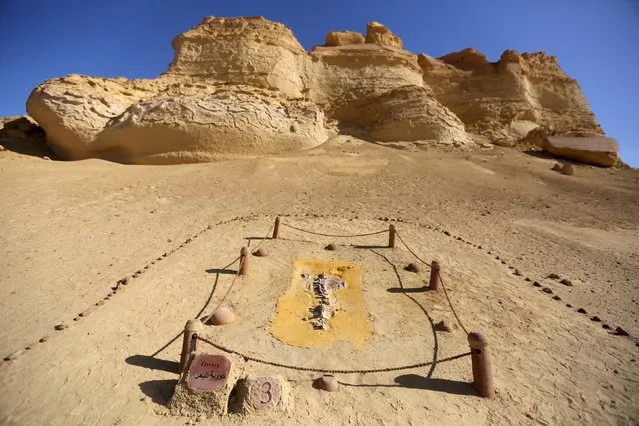
Fossil of a sirenia (or "sea cow") is pictured in the natural reserve area of Wadi Al-Hitan, or the "Valley of the Whales", at the desert of Al Fayoum Governorate, southwest of Cairo, Egypt, January 14, 2016. Wadi Al-Hitan holds an impressive collection of fossils and bones, some of which date back over 40 million years. The entire site resembles an open-air museum with marked trails that visitors can follow to admire the fossils and rock formations that extend over a vast area. (Photo by Mohamed Abd El Ghany/Reuters)
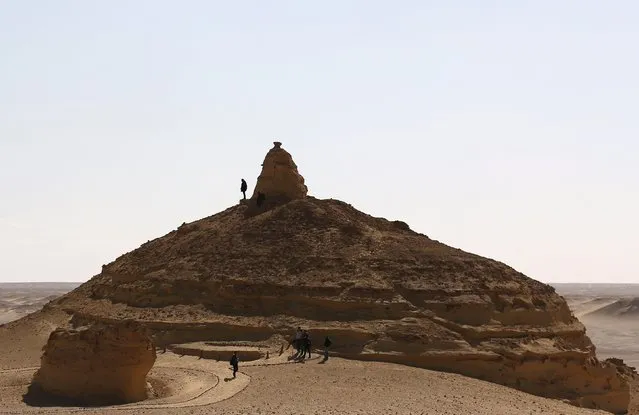
People walk around the natural reserve area of Wadi Al-Hitan, or the "Valley of the Whales", at the desert of Al Fayoum Governorate, southwest of Cairo, Egypt, January 14, 2016. (Photo by Mohamed Abd El Ghany/Reuters)
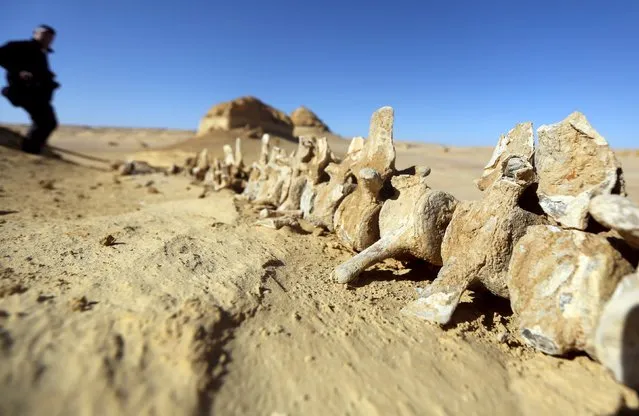
A fossil is pictured in the natural reserve area of Wadi Al-Hitan, or the "Valley of the Whales", at the desert of Al Fayoum Governorate, southwest of Cairo, Egypt, January 14, 2016. (Photo by Mohamed Abd El Ghany/Reuters)
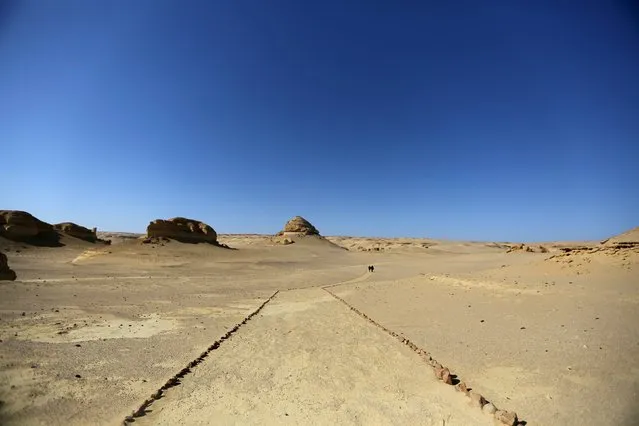
People walk around the natural reserve area of Wadi Al-Hitan, or the "Valley of the Whales", at the desert of Al Fayoum Governorate, southwest of Cairo, Egypt, January 14, 2016. (Photo by Mohamed Abd El Ghany/Reuters)
16 Jan 2016 08:06:00,
post received
0 comments
